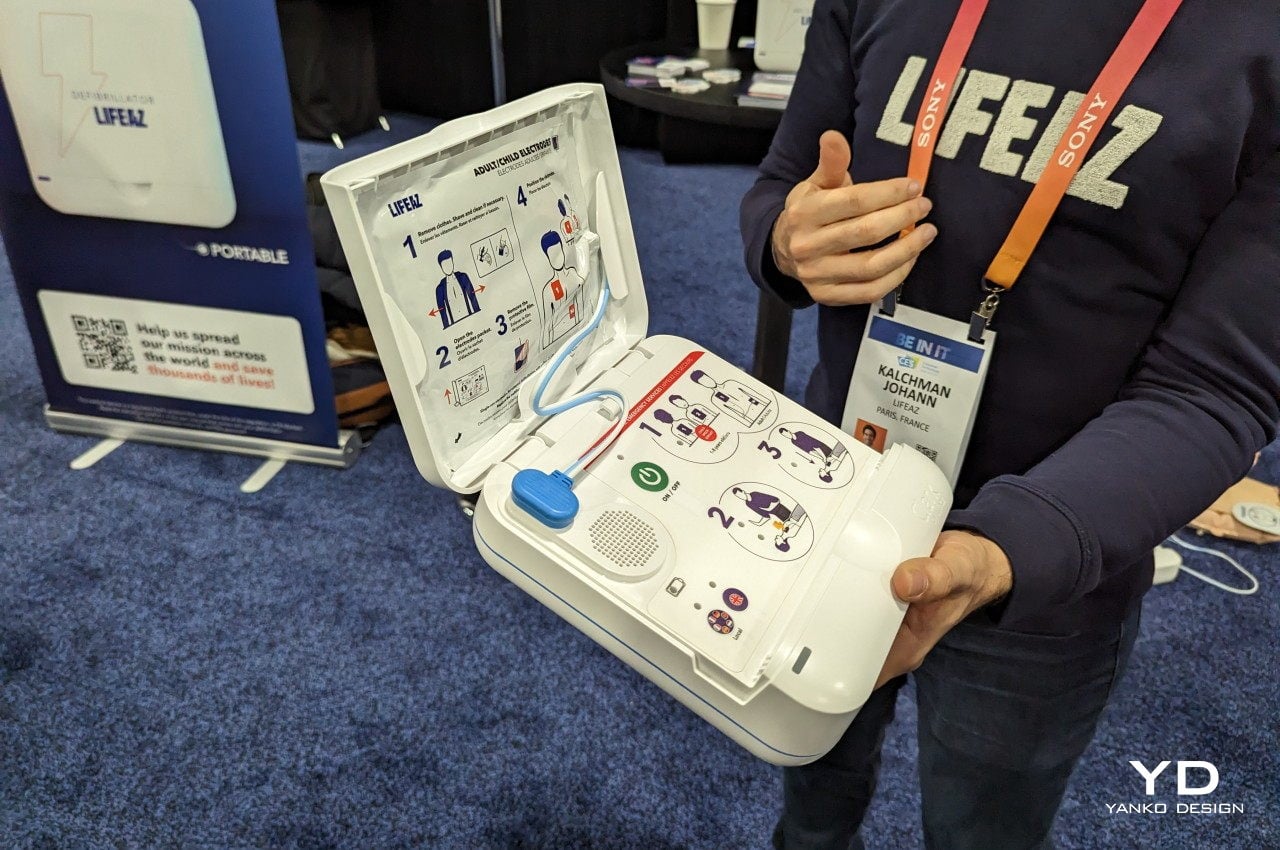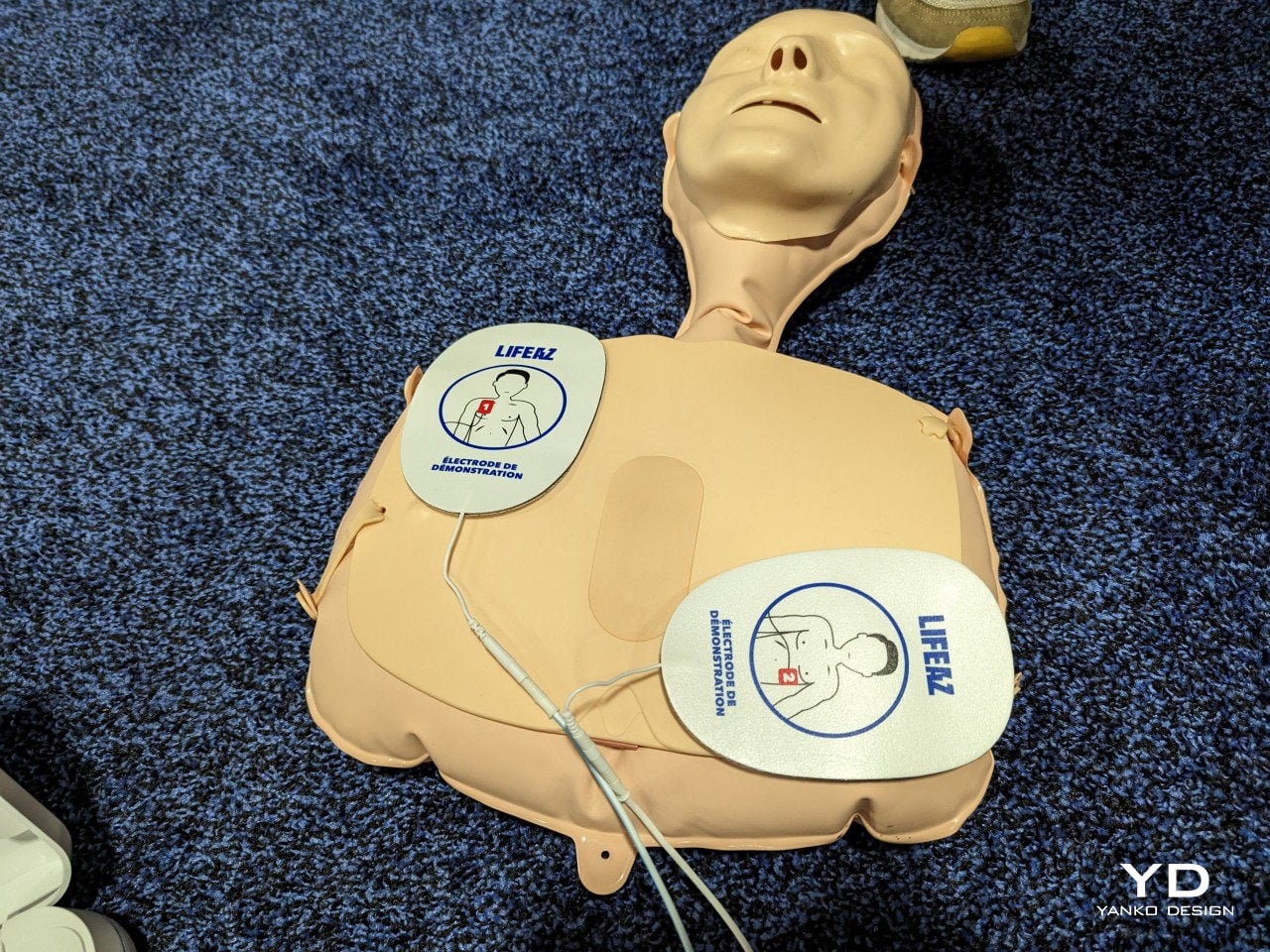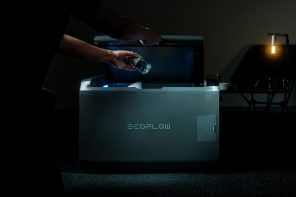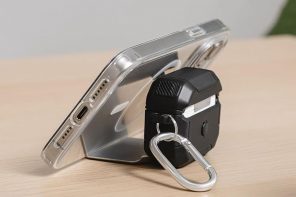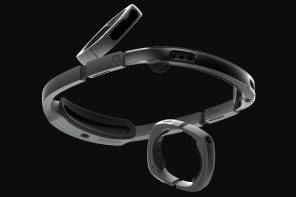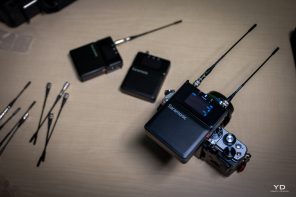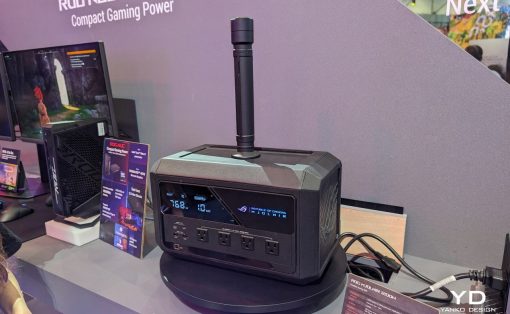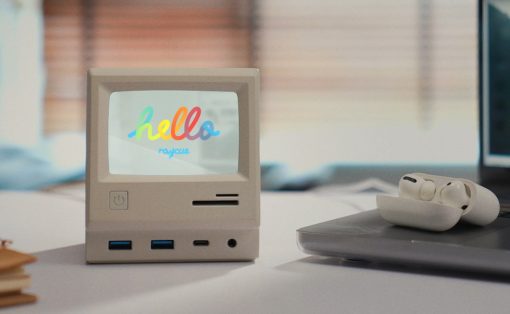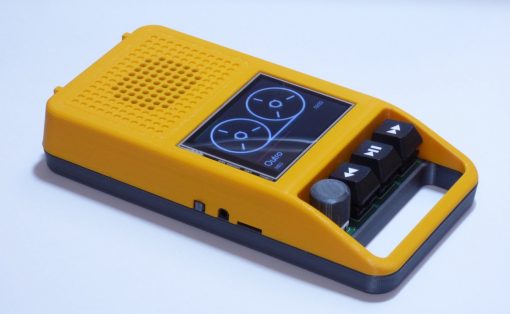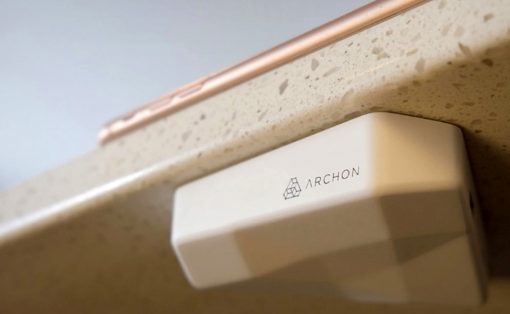Modern smartwatches like the Apple Watch are equipped with advanced sensors and algorithms that can help you contact emergency services in case of, well, an emergency. Unfortunately, that’s pretty much all they can do, and people are still left at the mercy of said services arriving on time. Even if you are with someone else, the chances of that other person knowing the proper medical procedures are slim, especially when medical equipment is needed in the first place. Rather than leave it up to chance and unpredictable traffic, a new innovative device puts fate into your own hands with a portable defibrillator that can help save your family or friends’ lives, even without intensive training.
Designer: Lifeaz
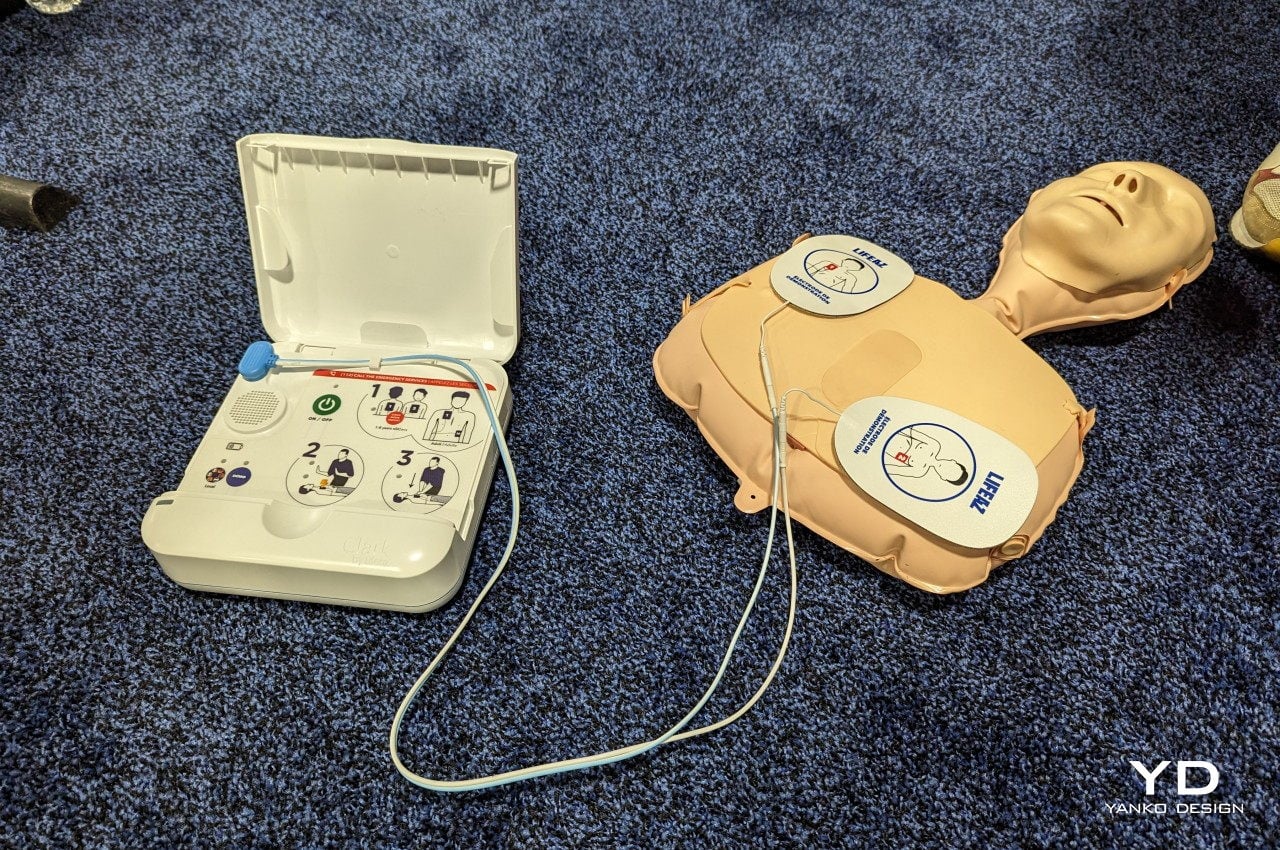
Defibrillators are a common sight in many TV shows whenever someone goes into cardiac arrest for one reason or another. It might look like a simple process, but reality is less rosy. In addition to the dangerously high voltage (that requires people to shout “Clear!” before each use), using a defibrillator requires proper placement and processes, which, in turn, require proper training. Unfortunately, hundreds of thousands of such cardiac arrests happen outside hospitals in the US alone, resulting in delayed treatment that could have saved thousands of lives.

With plenty of technologies now available that are devoted to diagnosing body conditions, it’s about time that we get something that can actively save lives. Lifeaz is that “something,” delivering a defibrillator in a small box that can even fit inside a backpack or travel bag in case you need to go somewhere remote. Of course, its main purpose is to stay at home, ready to be used in an emergency to deliver life-saving procedures within those critical first four minutes of a cardiac arrest.
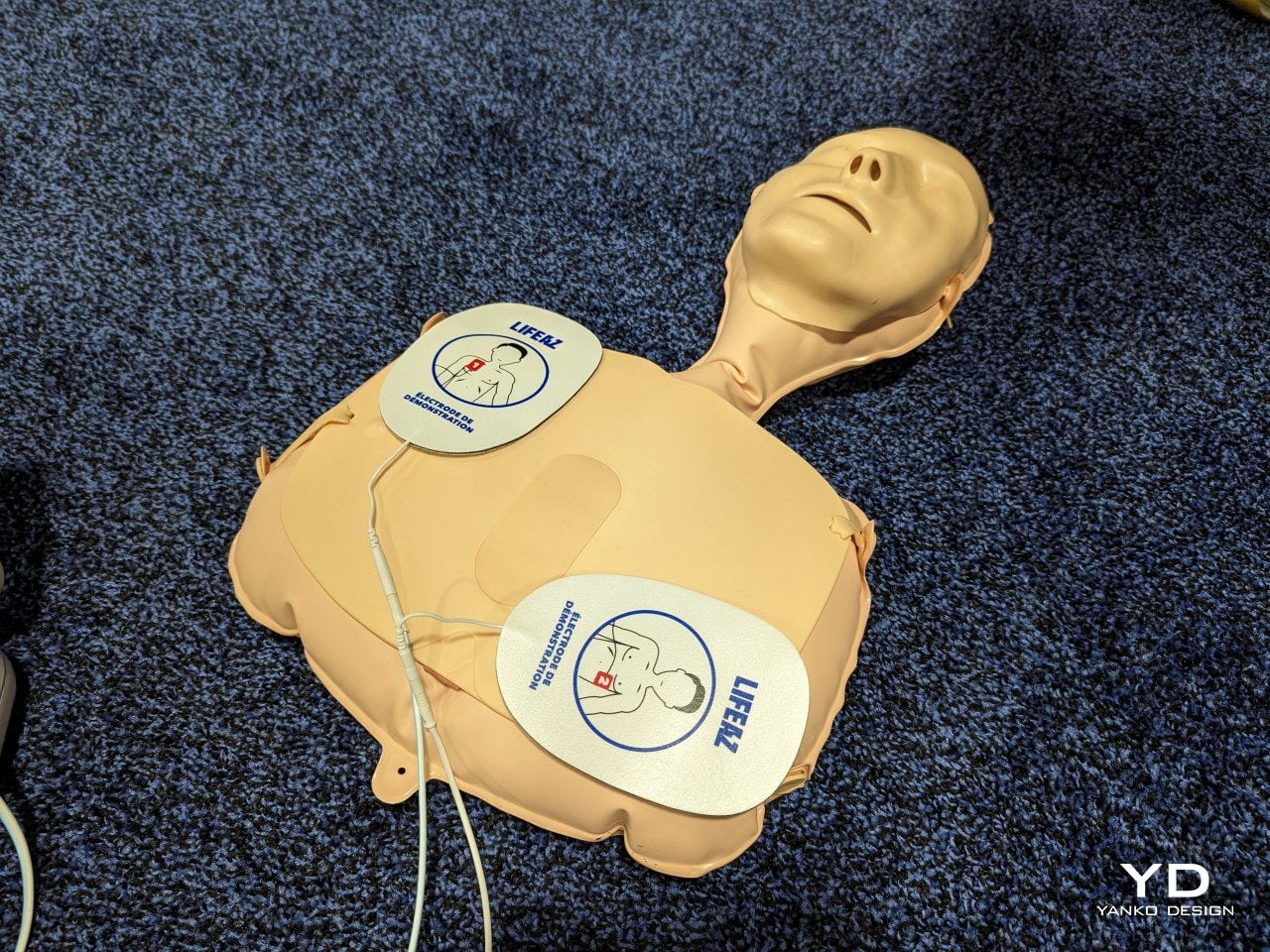
Just as important as its portability is Lifeaz’s extreme ease of use. You simply have to follow the simple instructions to activate the machine in a box and place the electrodes in the proper places, helpfully indicated by clear diagrams. From there, the device can intelligently analyze the situation and the patient’s condition in order to determine the proper settings to help the heart get back up. Users need not be trained emergency personnel and don’t even have to get actively involved other than setting up the machine and monitoring things through a mobile app.
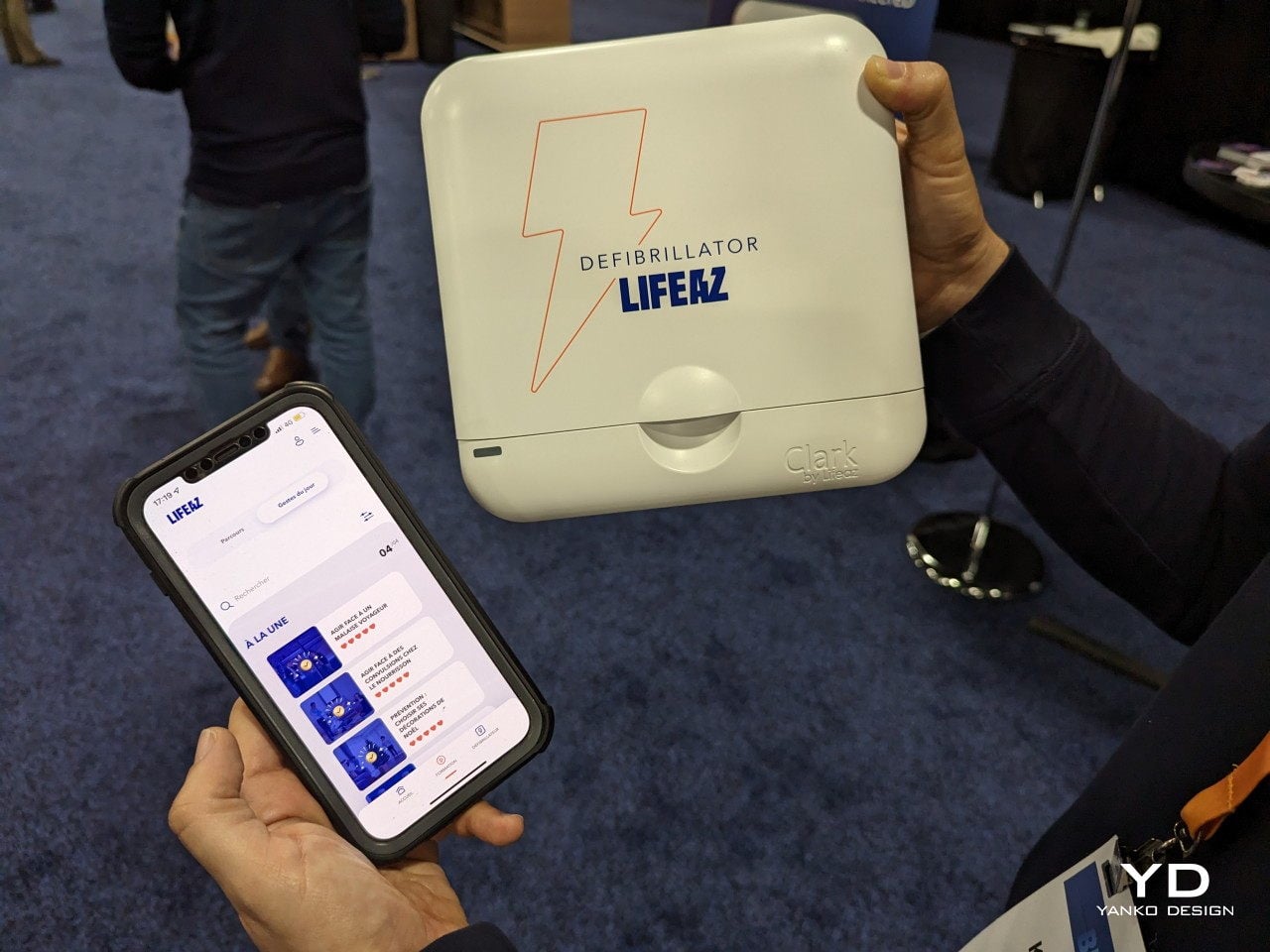
Lifeaz has already been embraced by as many as 10,000 families in Europe and has even been credited in saving 17 lives. In the US, they are still working towards FDA certification, but there will clearly be a huge market waiting for its life-saving technology. After all, it’s one thing to be able to know when your heart isn’t in good condition and quite another matter of literal life or death to get it beating again.
